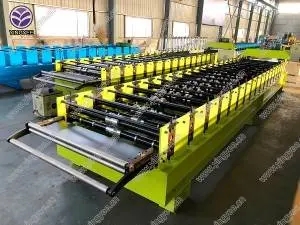
Understanding the Straightening Machine Key to Precision Manufacturing
In the world of metalworking and manufacturing, achieving precision is paramount. One of the unsung heroes in this quest for accuracy is the straightening machine. Designed to correct distortions and irregularities in metal materials, straightening machines play a crucial role in ensuring that products meet rigorous standards and specifications.
Straightening machines vary in design and functionality but generally operate on the same principle applying controlled force to the material, thereby restoring it to a straight or flat condition. Commonly used in industries such as construction, automotive, and aerospace, these machines can work with a range of metals, including steel, aluminum, and copper. Their effectiveness makes them indispensable in processes like sheet metal fabrication and structural steel production.
The working principle of a straightening machine often involves the use of rolls, presses, or hammers. For example, in a roll straightening machine, the metal is passed through a series of rollers that exert pressure, effectively realigning any bends or twists. This method is particularly effective for long lengths of material and can handle varying thicknesses. Hydraulic straighteners, on the other hand, employ hydraulic jacks to apply force, making them suitable for thicker materials and providing greater control over the straightening process.

One of the most significant advantages of straightening machines is their ability to enhance the mechanical properties of the materials being processed. By eliminating stresses and inconsistencies, these machines not only ensure a superior finish but also improve the overall strength and durability of the final product. As a result, manufacturers can produce components that perform better under operational loads, thus increasing safety and efficiency.
Moreover, advancements in technology have led to the development of automated straightening machines equipped with sensors and computerized controls. These innovations enable operators to achieve optimal straightening with minimal manual intervention. The integration of smart technology also allows for real-time monitoring and adjustments, ensuring consistent quality and reducing waste.
In conclusion, straightening machines are vital to achieving precision and quality in metal manufacturing. By correcting imperfections and enhancing material properties, these machines not only improve production efficiency but also contribute to the creation of safer and more reliable products. As industries continue to evolve, the importance of straightening machines will undoubtedly grow, ensuring that they remain a key component in the manufacturing landscape. Their role in maintaining quality and precision cannot be overstated, making them an essential asset for manufacturers striving to meet the demands of today’s market.